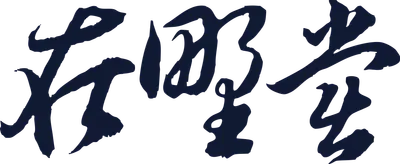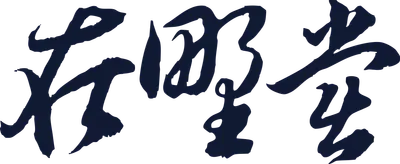作者:鲁慧文 责任编辑:罗志飞
2025年6月13日湖南卫健委、长沙公安局与中南大学组成调查组,认定罗帅宇系自杀,无刑事案件,至此罗帅宇案件在全国上下的一片哗然中画上终止符。
调查组结果公布前的一个月左右时间里罗帅宇案件在中国内地各大主流媒体与自媒体一度形成热议,多日霸屏微博热搜榜,罗父罗母及海内外关注罗帅宇事件的人们一度对罗帅宇案件得以受理抱有较大期待。
实习医生罗帅宇坠楼事件回顾:
罗帅宇,1996年出生,系湖南长沙中南大学湘雅二医院从事肾移植方向的实习医师,他于2024年5月8日在学校宿舍楼坠亡,时年28岁。案发时长沙警方及医院联动调查认定其为“跳楼自杀”,排除了他杀嫌疑,这直接爆发疑点并引起社会舆论。
家属和网民提出多个疑点,认为该案可能涉及他杀或被“灭口”:
1. 坠楼环境异常:罗帅宇坠落点位于离宿舍墙7米外的一个仅80厘米宽的狭窄通道,跨护栏难度极大,引发“自杀不合逻辑”质疑。
2. 现场疑似打斗迹象:宿舍内床单凌乱、眼镜碎裂、抽屉被翻,存在血迹,家属称现场不符典型自杀场景。
3. 其未提前留言准备跳楼:其家属表示,他曾在直播中强调“不会自杀”,其言辞与刑侦报告有严重偏差。
4. 举报转账及资料删除说法:家属称医院曾以“劳务报酬”为名向其账户转账超40万元,并在其死亡后快速收回电脑并删除资料。
5. 媒体与官媒对比:自由媒体及家属坚称这些线索极可能与其举报医院涉及非法器官移植有关,相信其死亡另有内情。反之,官方称其死亡与举报活动无关。
2025年6月13日最新官方发布回应与调查结论:
1、综合调查结果:湖南卫健委、长沙公安局与中南大学组成调查组,认定罗帅宇系自杀,无刑事案件,且未发现器官移植相关违法行为。
2、数据核查结果:家庭存疑的50例器官捐赠资料,经查均可追溯至中国人体器官分配系统,属合法范畴。
3、关键否认:警方认为其死亡前曾发短信告知同事“把电脑文件交纪委”未真实发送,电脑资料未被清空,家属或出现误解。
罗帅宇事件最新官方回应的发布是罗帅宇案件的彻底终结,也是中国独裁体制下司法不公的深度体现,同时罗帅宇“自杀”事件也标志着中共独裁统治维稳战略系统的重大升级。罗帅宇案从案发到此次最新官方回应发布的一年多时间里都是各大官方媒体、民间媒体的禁忌话题,一直被以封口、删帖、限流等方式压制,最新官方回应发布前的一段时间里官方对于罗帅宇话题处于完全开放讨论状态,主流媒体和个人媒体争相报道,并一度以多个话题霸屏微博热搜榜数日,造成一种冤案得以昭雪正义终将到来的假象,并且以很高位的官方介入姿势调查,并给出一个令人唏嘘的结论。
中国政府维稳手段升级,从之前的掩盖真相压制言论转而为告诉你有此事的存在,大家讨论的事是真实的,最终高调介入并告诉你事情是正常的,不再掩盖真相,而是重新定义黑与白。
Hunan Health Commission, Changsha Public Security Bureau, and Central South University Conclude: Lou Shuaiyu Died by Suicide
By Lu Huiwen Edited by Luo Zhifei Translator: Lu Huiwen
On June 13, 2025, a joint investigation team composed of the Hunan Provincial Health Commission, Changsha Public Security Bureau, and Central South University officially concluded that Lou Shuaiyu died by suicide and that no criminal case was involved. With this announcement, the highly publicized Lou Shuaiyu case was brought to an abrupt close amid widespread national controversy.
In the month leading up to the release of the report, Lou’s case had become a major point of debate across mainstream and independent media in mainland China, dominating trending topics on Weibo for several days. Lou’s parents, as well as concerned supporters at home and abroad, had high hopes that the case would receive fair and transparent handling.
Background: The Death of Medical Intern Lou Shuaiyu
Lou Shuaiyu, born in 1996, was a 28-year-old medical intern specializing in kidney transplants at the Xiangya Second Hospital affiliated with Central South University in Changsha, Hunan. On May 8, 2024, he fell to his death from a campus dormitory building. Authorities from the local police and hospital quickly declared the cause to be suicide and ruled out foul play—an assessment that triggered widespread public skepticism and scrutiny.
Key Doubts Raised by Family and the Public
Many questioned the suicide ruling and suspected foul play or silencing efforts:
1. Suspicious Fall Site: Lou’s body was found in a narrow passageway only 80 cm wide, located 7 meters from the dorm wall. The distance made the idea of a voluntary jump seem implausible.
2. Signs of a Struggle: Inside the dorm, his bed was in disarray, his glasses were shattered, drawers were rummaged through, and blood was found—elements inconsistent with a typical suicide scene, according to his family.
3. No Prior Indication of Suicide: Lou had reportedly stated during a livestream, “I will never kill myself,” a statement that stood in stark contrast to official findings.
4. Large Transfers and Data Deletion: The family claimed the hospital had transferred over 400,000 yuan to Lou’s account under the label of “labor compensation,” and that after his death, his computer was swiftly retrieved and its contents deleted.
5. Discrepancy Between State and Independent Media: While family members and independent outlets believed Lou’s death might be linked to his whistleblowing on illegal organ transplant practices, state media firmly denied any connection, asserting the cause of death was unrelated.
The Official Conclusions Released on June 13, 2025
1. General Findings: The joint investigation concluded Lou died by suicide, found no criminal elements, and detected no illegal organ transplant activities.
2. Verification of Organ Data: The 50 questionable transplant cases raised by the family were verified and deemed traceable within China’s official organ allocation system, thus considered legal.
3. Rebuttal of Key Claims: Authorities stated that Lou’s alleged final message—telling a colleague to submit his computer files to disciplinary authorities—was never actually sent. They also claimed that his computer had not been wiped, suggesting the family may have misunderstood.
Commentary: A Case Closed, A System Exposed.
The government’s final statement not only closed the Lou Shuaiyu case but also exposed the deeper systemic flaws of justice under authoritarian rule in China. It revealed a sophisticated evolution in the Chinese Communist Party’s propaganda and “stability maintenance” apparatus.
From the time of Lou’s death to the release of the official report over a year later, discussion of the case remained taboo across state and private media. Posts were deleted, accounts censored, and discussion throttled. Yet in the weeks leading up to the June 13 announcement, the topic was unexpectedly opened to broad public discourse.
Major media outlets and influencers began reporting freely, and Lou’s name once again dominated trending lists—creating an illusion of justice in motion and resolution on the horizon.
Then came the official conclusion—a high-profile government investigation that ultimately declared nothing abnormal.
This marks a new strategy in state control: no longer merely burying the truth, but acknowledging the facts—only to redefine them.
The state now tells you: Yes, this did happen. Yes, you are allowed to talk about it. But in the end, we will tell you what it means.
Black is white.
Wrong is right.
And justice, once again, becomes a tool of control rather than truth.


